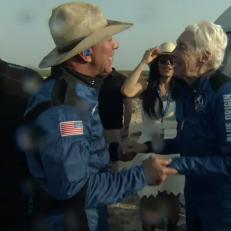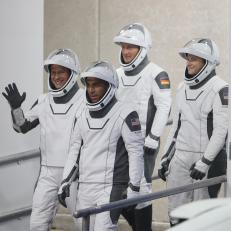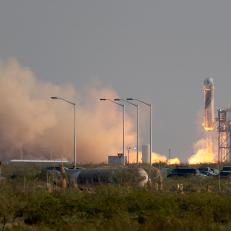A Spacecraft Has Touched the Sun, for the First Time in History
Three years after NASA's Parker Solar Probe was launched in 2018, Parker entered the sun's upper atmosphere – One small step for the probe, one giant leap for solar science.
Today, NASA announced new results from this monumental research project. The Parker Solar Probe sampled particles and magnetic fields from the sun's corona bringing in new discoveries. Here are some behind-the-scenes images from this historic moment.
December 14, 2021
By:
Tatum Lenberg
View The Gallery
1 / 8
NASA's mission to touch the Sun began its journey in 2018.
The solar wind is a constant stream of charged particles that emanate from the Sun and affect all the planets in the solar system.
Parker Solar Probe uses remote and direct measurements to collect data about the Sun.
NASA’s Parker Solar Probe is lifted to the third stage rocket motor on July 11, 2018, at Astrotech Space Operations in Titusville, Florida. In addition to using the largest operational launch vehicle, the Delta IV Heavy, Parker Solar Probe will use a third stage rocket to gain the speed needed to reach the Sun, which takes 55 times more energy than reaching Mars.
Parker Solar Probe was designed and built at the Johns Hopkins University Applied Physics Laboratory.
Parker Solar Probe, shown on July 16, 2018, is mounted atop its third stage rocket motor with one half of the 62.7-foot tall fairing that will encapsulate it. After encapsulation, the spacecraft will move from Astrotech Space Operations in Titusville, Florida to Space Launch Complex 37 on Cape Canaveral Air Force Station, where it will be integrated onto it launch vehicle, a United Launch Alliance Delta IV Heavy.
Seen here inside one half of its 62.7-foot tall fairing, NASA’s Parker Solar Probe was encapsulated on July 16, 2018, in preparation for the move.
First light data from Parker Solar Probe's WISPR (Wide-field Imager for Solar Probe) instrument suite. The right side of this image — from WISPR's inner telescope — has a 40-degree field of view, with its right edge 58.5 degrees from the Sun's center. The bright object slightly to the right of the image's center is Jupiter. The left side of the image is from WISPR’s outer telescope, which has a 58-degree field of view and extends to about 160 degrees from the Sun. It shows the Milky Way, looking at the galactic center. There is a parallax of about 13 degrees in the apparent position of the Sun as viewed from Earth and from Parker Solar Probe.



















